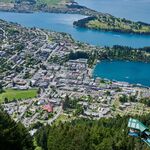To support that, the announcement that the Milton line would go ahead happened within a couple weeks after the derailment but long before the Inquiry into said event even was initiated. (Check out the Toronto Star of Dec 1 1979 for details) By January 1980 - again, before the inquiry into the derailment had even taken place - CP was before the Transport Commission requesting leave to add the third track west of Royal York - their plans were clearly pretty well designed before the derailment happened.
What held up the Milton line was actually funding - as early as 1977, the Province was publicly asking Ottawa for funding and Ottawa was declining (again, check the Toronto Star - March 2 and April 16 1977).
The politics of the derailment led to the loosening of government purse strings, and not just CP's willingness to cooperate.
The dynamics of people thinking hey, there's a rail line, we must be able to drop a commuter train onto it is part of the ritual defensiveness of the railway industry towards passenger rail.
Fair enough, but that design philosophy can still apply as more lines are added. Certainly, we will see a track or two added on the milton line that are run quite separately from freight. Ditto to Bolton. And Brampton-Silver. The track centers may be closer to the freight line than between the GO Sub and the Kingston Sub, but we are trending towards two different sets of infrastructure.
View attachment 644600
View attachment 644602
- Paul
















